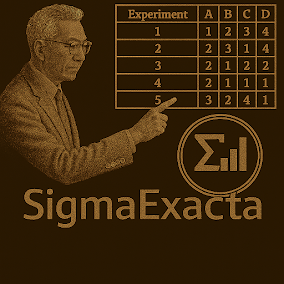In the world of manufacturing and engineering, consistency is king. Yet, for decades, a fundamental challenge has persisted: a product that performs perfectly in a controlled laboratory can often fail or underperform in the unpredictable conditions of the real world. This gap between design intent and real-world performance is the source of countless defects, warranty claims, and customer dissatisfaction.
The answer to this problem didn't come from a new material or a faster machine, but from a profound shift in philosophy, pioneered by a Japanese engineer named Dr. Genichi Taguchi. His work introduced the principles of Robust Design, a methodology that has quietly revolutionized how the world's leading companies approach quality.
An Architect of Quality, Born from Necessity
The story of the Taguchi Method begins in the ashes of post-war Japan. Dr. Taguchi, an engineer and statistician working to rebuild the nation's telecommunications systems, recognized the crippling inefficiency of traditional quality control. The standard approach was to manufacture products and then inspect them, scrapping or reworking failures. This, he argued, was a costly admission of defeat.
He proposed a radical alternative: what if quality could be designed into the product and the manufacturing process itself? He introduced the concept of the Quality Loss Function, which posited that any deviation from a target value, even if within acceptable specification limits, represents a "loss" to society. The further a product deviates from its ideal target, the greater the loss through poor performance, repairs, and reputational damage.
The goal, therefore, was not merely to meet a specification, but to create a product or process that was "robust"—inherently insensitive to the "noise" of real-world variability, such as fluctuations in temperature, raw material inconsistencies, or operator differences.
The Pillars of the Method: Efficiency and Insight
The brilliance of Dr. Taguchi's approach lies in two key innovations that made this philosophy practical.

Orthogonal Arrays: To test the influence of multiple factors on a process (e.g., temperature, pressure, speed, material type), a full "one-factor-at-a-time" or full-factorial experiment would require an astronomical number of runs. For example, testing seven factors at two levels each requires 128 experiments. Taguchi championed the use of Orthogonal Arrays, a form of fractional factorial design that allows engineers to evaluate the main effects of many factors with a remarkably small number of balanced, systematic experiments. The same seven-factor study could be completed in just eight runs using an L8 array, drastically reducing time and cost.
The Signal-to-Noise (S/N) Ratio: Perhaps Taguchi's most significant contribution is this powerful metric. Instead of analyzing the average result and its variation separately, the S/N ratio combines them into a single measure of robustness. The "Signal" is the desired outcome (e.g., strength, dimension), while the "Noise" represents the undesirable variation. The objective in every experiment is simple and universal: find the combination of factors that maximizes the S/N ratio. This singular focus guides engineers toward settings that produce the most consistent and reliable performance.
From Theory to the Factory Floor
The impact of these ideas was transformative. Japanese companies, most famously Toyota, embraced this philosophy, building a global reputation for unparalleled quality and reliability. The automotive, electronics, and aerospace industries soon followed, integrating Robust Design into their core product development cycles. The method is used to design everything from more durable car engines to more consistent chemical processes and higher-yield semiconductor manufacturing.
The Digital Bridge: Making Robust Design Accessible
However, for decades, applying these methods presented a significant hurdle. It required a deep statistical background and access to expensive, specialized software. For years, professionals have relied on powerful but costly industry-standard tools like Minitab® or JMP®, whose licenses can run into thousands of dollars. This financial barrier placed these advanced techniques out of reach for many smaller companies, students, and individual engineers.
This historical barrier is beginning to crumble with the rise of accessible, browser-based digital tools. These platforms automate the complex statistical calculations, allowing users to focus on the experimental process itself.
One such platform, the SigmaExacta Robust Design calculator, provides a clear window into how this process works in practice. To illustrate, we can trace the steps of a typical optimization study.
Setup and Definition: The user first defines the experiment's objective and inputs the factors (variables like 'Temperature') and their levels (settings like '100°C, 120°C').
Design Generation: The tool then automatically selects the most efficient Orthogonal Array (e.g., L4, L8, L9) for the defined factors and generates a clear experimental plan. This table dictates the exact combination of factor levels for each experimental run.
Data Entry and Analysis: After performing the physical experiments and recording the outcomes, the user enters the results into the tool. With a single click, the platform performs a full analysis.
Actionable Reporting: The output is not just raw data, but a comprehensive report. It identifies the most influential factors through Pareto charts, visualizes their impact with Main Effects Plots, and provides statistical validation with an ANOVA table. Crucially, it delivers the final verdict: a clear recommendation of the optimal factor settings required to achieve a robust, high-quality outcome.
An Enduring Legacy
Dr. Taguchi's work provided more than just a set of statistical tools; it offered a fundamental change in perspective. It taught engineers that the key to superior quality lies not in rigid control and inspection, but in designing products and processes that can gracefully absorb the inevitable variations of the real world.In an age of increasingly complex systems and ever-higher customer expectations, these principles are more relevant than ever. They remain a testament to the idea that the highest quality is not achieved by accident or inspection, but by intelligent and robust design.




Comments